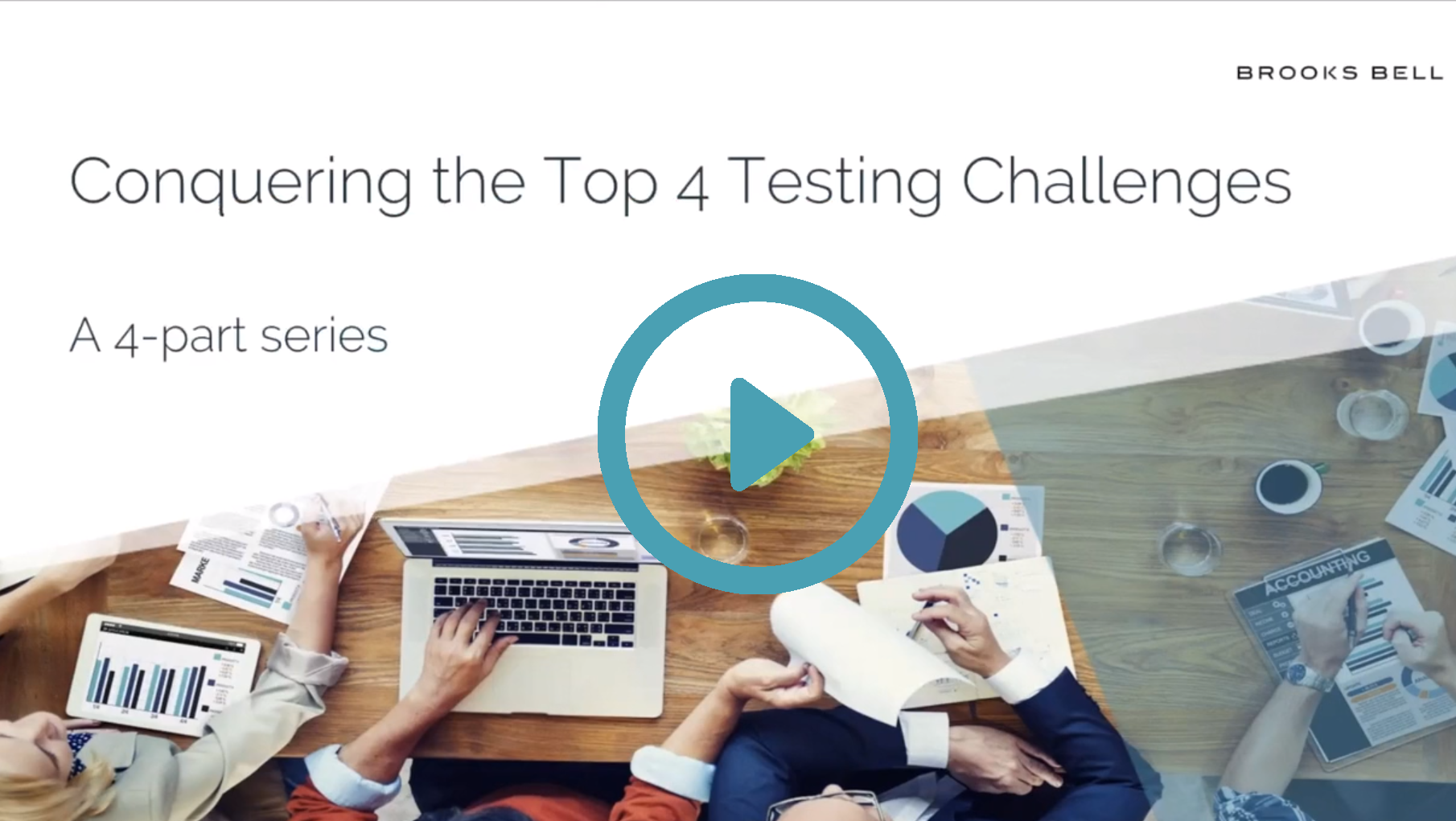
Would you rather have a root canal, or try to build something completely new at a huge, enterprise-level company that seems to be held together with nothing but red tape and internal politics?
That may seem a bit dramatic, but obtaining buy-in for experimentation is a difficult challenge faced by many of our clients. Over the last 15 years, we’ve identified some hard truths about getting others to invest in testing. And in the spirit of “being real,” (one of our core values) we’ve decided to share them with you.
1. You have to bait the hook to suit the fish.
“The world is full of people who are grabbing and self-seeking. So the rare individual who unselfishly tries to serve others has an enormous advantage. He has little competition.” – Dale Carnegie, How to Win Friends & Influence People
We’ll take good ole Dale Carnegie’s advice on this one: if you want to convince someone to do something, you have to frame it in terms of what motivates them. In order to do that effectively, you have to be able to see things from their point of view.
“My go-to strategy for gaining executive buy-in for testing programs is to focus my discussions with them on the business impact of a well-run and successful testing program,” says Kenny Smithnanic, Director of E-Commerce at Ultra Mobile. “Most executives I’ve worked with want to see better company performance, even if they aren’t directly evaluated on this. So, I tend to discuss the exact revenue, orders, leads, and/or average order value increase that our business could realize from the accumulated gains of a successful testing program.”
When you’re pitching your experimentation program, position it as a program that works in service to other departments. Consider also your company’s big picture objectives and pinpoint where experimentation can work in direct support of those.
2. You’re gonna lose if you make it all about winning.
Managing expectations is critical. Optimization is as much about learning about your customers as it is about landing some quick wins. And learning sometimes requires failure. Or, in this case, a few flat or losing tests. In fact, the industry win rate is actually 25%. If the expectation is that every test has double-digit lifts, it’s going to be a rough road ahead.
All that said, here are a few strategies to manage expectations for your program.
Include executives in the ideation process. Let them see how your team is using data, generating lots of great testing ideas and working collaboratively. Including them in this process also provides them with a sense of ownership and investment to see how a strategy performs.

Develop a consistent (in frequency, timing and format) reporting structure. As you’re reporting the results of each experiment, begin by framing it in the context of your company’s larger goals. Don’t make the mistake of only focusing on the winning experience. Rather, walk your stakeholders through each variation individually and the resulting insights based on their performance.
State what’s next on your priority list, based on these results. This builds anticipation for your next round of tests, setting you up for future success, regardless of individual results.
3. Proving people wrong doesn’t convince them you’re right.
Avoiding pushback to your ideas requires three things: Knowing what you’re up against, anticipating challenges and being open to others’ solutions.
Because executing tests often requires cross-functional support, you may have to take a test and learn approach to your experimentation program. You might also have to make a few compromises or adopt short-term solutions along the way.
Ultimately, if you’re seeking to make experimentation a core competency at your organization, you have to bring others along in the process. This means that as problems arise, it’s okay to recommend a solution, but you also have to be open to trying others’ solutions as well.
Only by solving problems together will you be able to build a high-functioning experimentation program and team.

4. You’re not going to blow anyone’s mind by using big words or snazzy acronyms.
In fact, when you’re trying to get people on board with testing, using super technical jargon can actually work against you.
Consider, for instance, the difference between “experimentation,” “testing,” and “optimization.” To you, these terms might mean the same thing, but to your boss, they may evoke different meanings.
So when you look to pitch your experimentation program, use terms that are familiar, accessible and aren’t at risk of being misinterpreted.
The same goes when introducing testing terminology to the broader organization. There are tons of acronyms associated with experimentation—RPV, AOV, UPT—the list goes on. Be sure you are decoding them until your team is more familiar. Revenue per Visit, Average Order Value, and Units per Transaction communicate far more meaning than an acronym.
Finally, consistency and intentionality are key here. Develop a common language for experimentation through trainings, lunch-and-learns and/or a company-wide roadshow. Finally, be sure that these terms are reflected in your internal processes: within meetings, in status reports, playbooks and in other means of communication.
5. Getting buy-in is not a one-time event.
You have to lay the groundwork. You have to build trust and credibility. You have to follow through. And through it all, you have to be a generally good person to work with.
“Experimentation is amazing because it is supported through quantitative data and statistically significant results – making it a very quantifiable and persuasive case,” says Suzi Tripp, Senior Director of Experimentation Strategy at Brooks Bell. “When you can share an experiment and tie it directly to incremental gains, it’s a powerful statement.”

But even if you get executive support for your program, you simply can’t expect everyone else to get on board immediately. In fact, having that expectation can lead to conflict and tension between teams, and cause a lot more internal problems.
To address this, we suggest working gradually: start out by working with one group, generate a success story, and share it through your internal communication channels, and keep going from there. Only by sharing your stories will other departments begin to be interested in harnessing that success as well.
Have ideas for other strategies to obtain buy-in for testing at your organization? We’d love to hear what’s worked for you. Share your story in the comments.

Insights are key.
Recent Insights
Let's do
something epic.
At Blazer, we partner with ambitious brands and leaders that refuse to settle for less.
Get Our Updates
Blazer is the consulting firm that helps brands prove what drives customer value, and builds teams that deliver on it.
16 W. Martin St., 9th Floor, Raleigh, NC 27601
16 W. Martin St., 9th Floor, Raleigh, NC 27601






